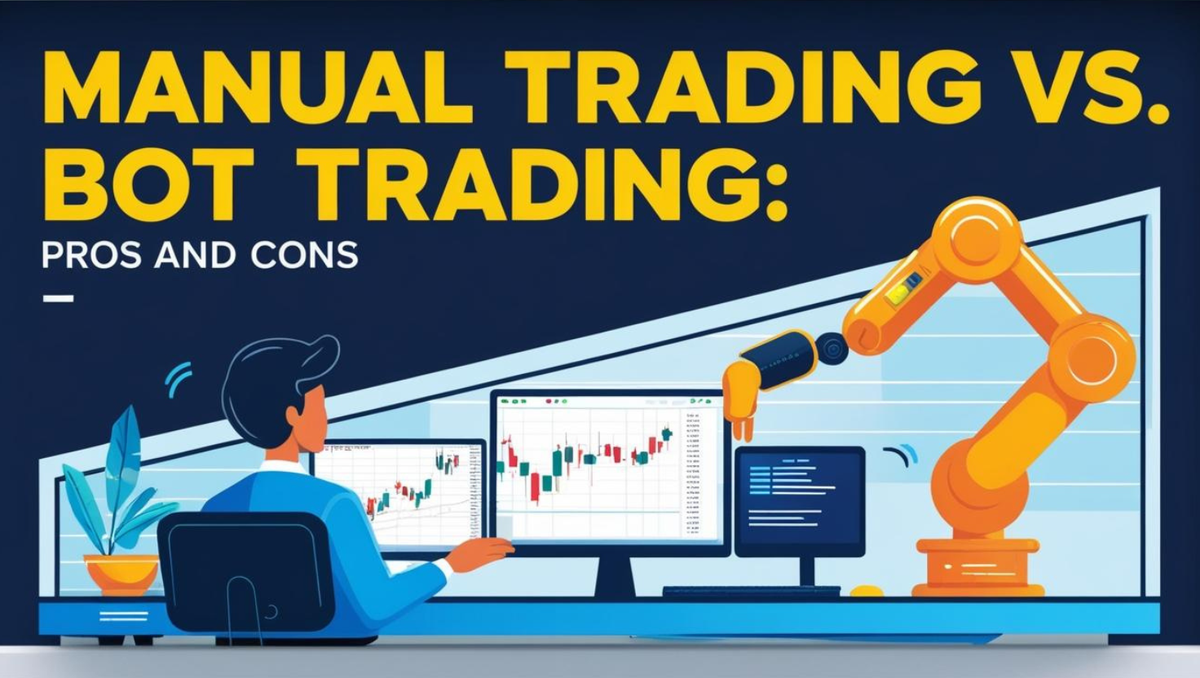Should you trade crypto manually or use an automated trading bot? Explore the pros and cons of both approaches and find out which one fits your strategy.
When diving into the world of crypto trading, one of the first big questions you'll face is whether to trade manually or use a bot. Both methods have their own strengths and weaknesses, and the best choice often depends on your experience, time commitment, emotional discipline, and goals.
In this article, we’ll break down the key differences between manual and bot trading, and help you decide which approach—or combination—might work best for you.
What Is Manual Trading?
Manual trading involves making all trading decisions yourself—when to buy, sell, or hold—based on your analysis of market trends, charts, and news. You execute each order by hand through your trading platform.
This method gives you full control but also requires constant attention and emotional discipline.
Pros of Manual Trading
- Total Control: You decide every move.
- Learning Experience: Great for understanding the market.
- Adaptability: You can react to real-time news or unexpected events.
Cons of Manual Trading
- Emotion-Driven Decisions: Fear and greed can lead to bad trades.
- Time-Intensive: You need to monitor markets constantly.
- Harder to Scale: Managing multiple pairs manually is difficult.
What Is Bot Trading?
Bot trading uses automated software to execute trades based on predefined rules or strategies. Bots can follow technical indicators, price movements, or complex algorithms to enter and exit trades.
The Trade Pilot, for example, scans the market 24/7 and executes trades across multiple crypto pairs based on your custom configuration.
Pros of Bot Trading
- Automation: Executes trades without your input.
- Emotion-Free: Sticks to strategy regardless of market mood.
- 24/7 Trading: Works even when you sleep.
- Handles Many Pairs: Perfect for managing a broad portfolio.
Cons of Bot Trading
- Less Human Oversight: Bots can’t react to news or black swan events.
- Requires Setup: You need to configure your strategy correctly.
- Over-Reliance Risk: Blindly trusting bots can be risky if markets shift dramatically.
When to Choose Manual Trading
Manual trading is a good choice if:
- You're new and want to learn the basics firsthand.
- You enjoy technical analysis and charting.
- You only trade a few pairs and have time to monitor them.
It also gives you more flexibility to react to fast-moving events like regulatory news or social media sentiment.
When to Use Bot Trading
Bot trading makes sense if:
- You have limited time to trade.
- You want to remove emotions from decision-making.
- You want exposure to more pairs without constant management.
- You’ve developed or are using a proven strategy.
The Trade Pilot is especially useful here—it's a cloud-based bot that trades automatically on your behalf. You configure the strategy once (setting filters, take profit, rebuys, etc.), and the bot monitors all pairs on the market, placing trades when your rules are met.
Combining Both: The Hybrid Approach
Some traders use bots for consistent, rule-based trading while also making manual trades when they see unique opportunities. This hybrid method can give you the best of both worlds—automation plus flexibility.
Final Thoughts
There’s no one-size-fits-all answer to manual vs. bot trading. Manual trading offers more control and flexibility, while bot trading offers consistency and scalability. Your personality, goals, and schedule will play a huge role in determining what fits best.
Tools like The Trade Pilot can make bot trading accessible, efficient, and beginner-friendly—especially for those who want to trade smarter, not harder.
Read also: Customizing Your Strategy: Manual vs. Auto-Rebuys

